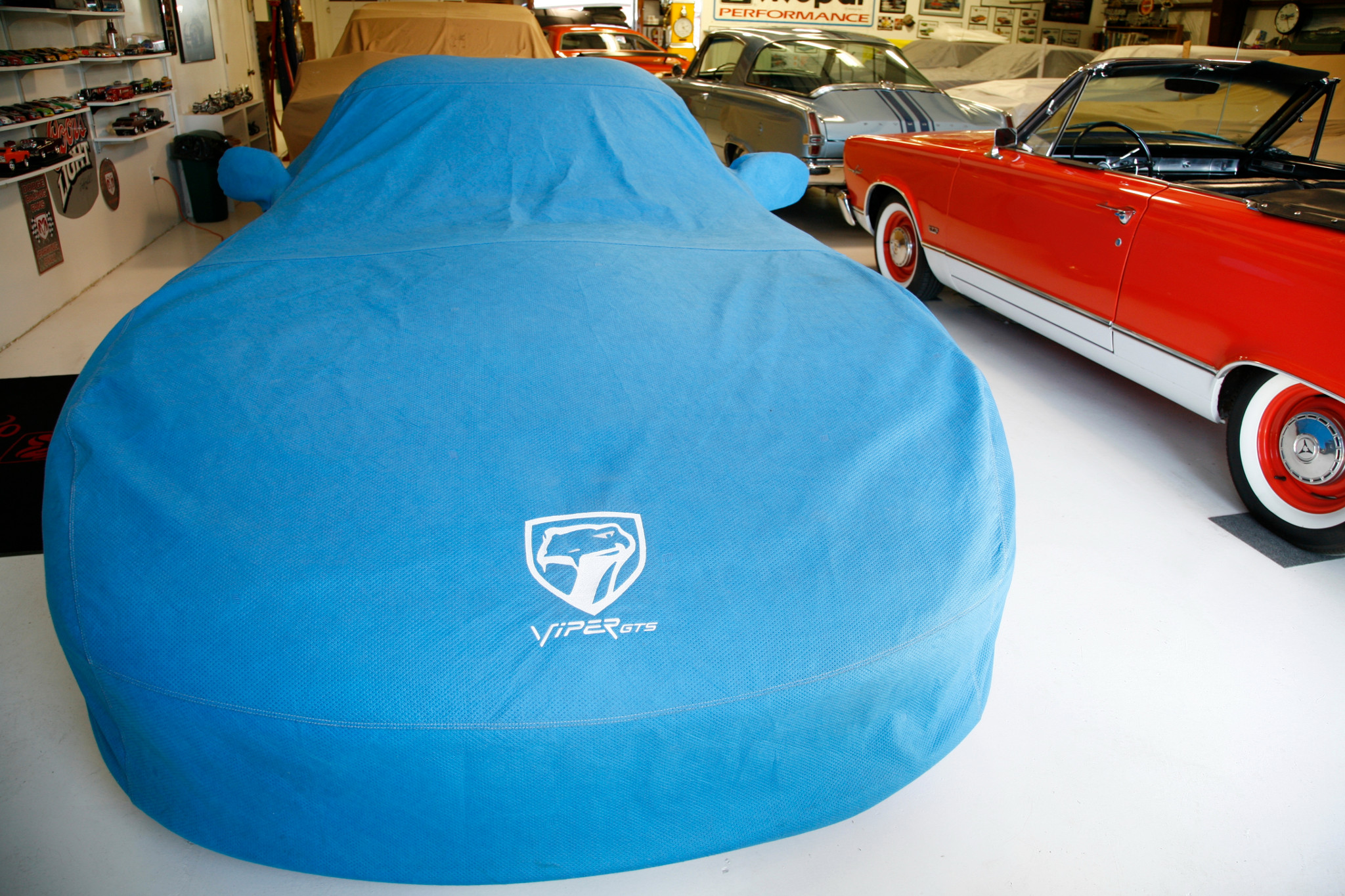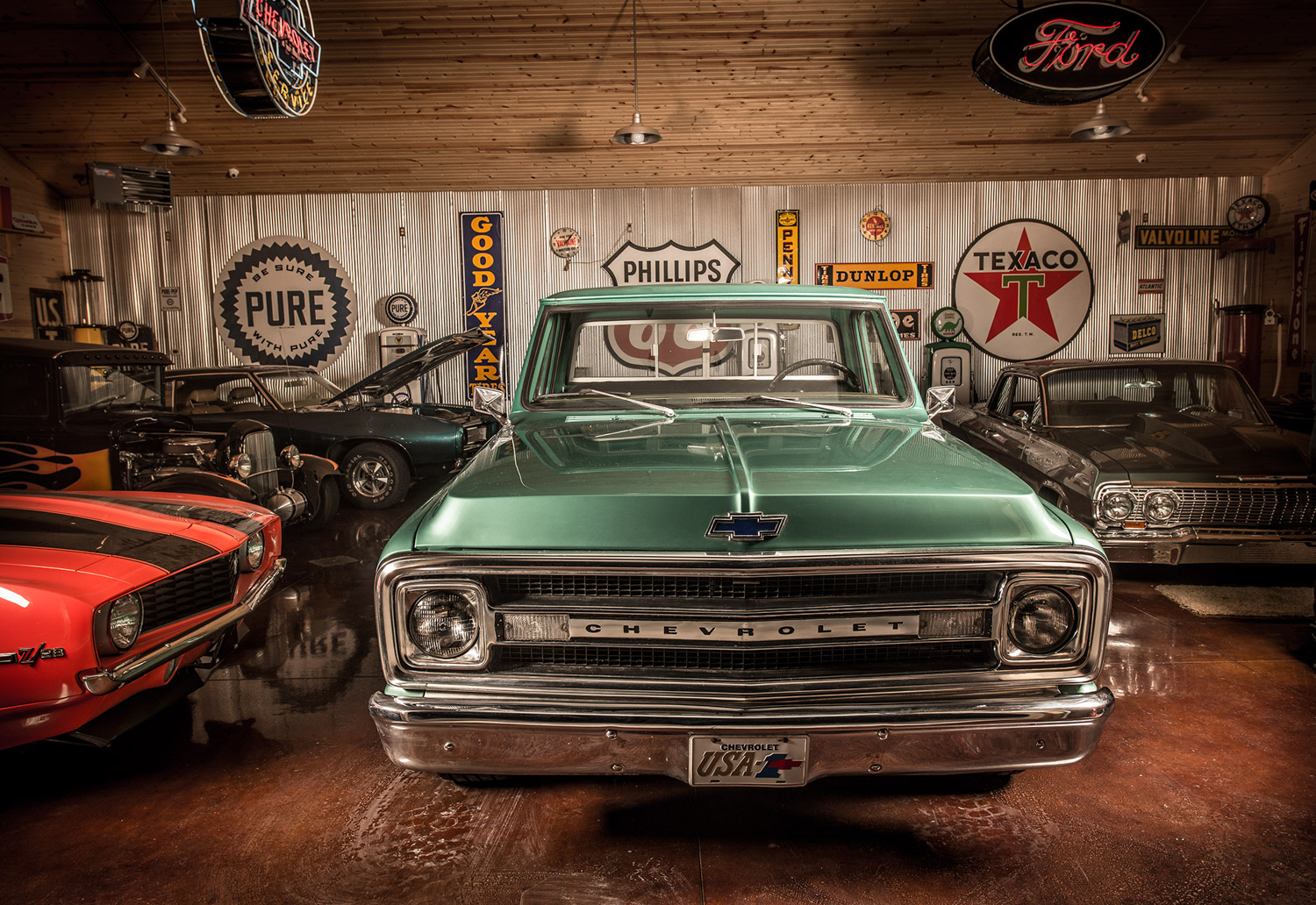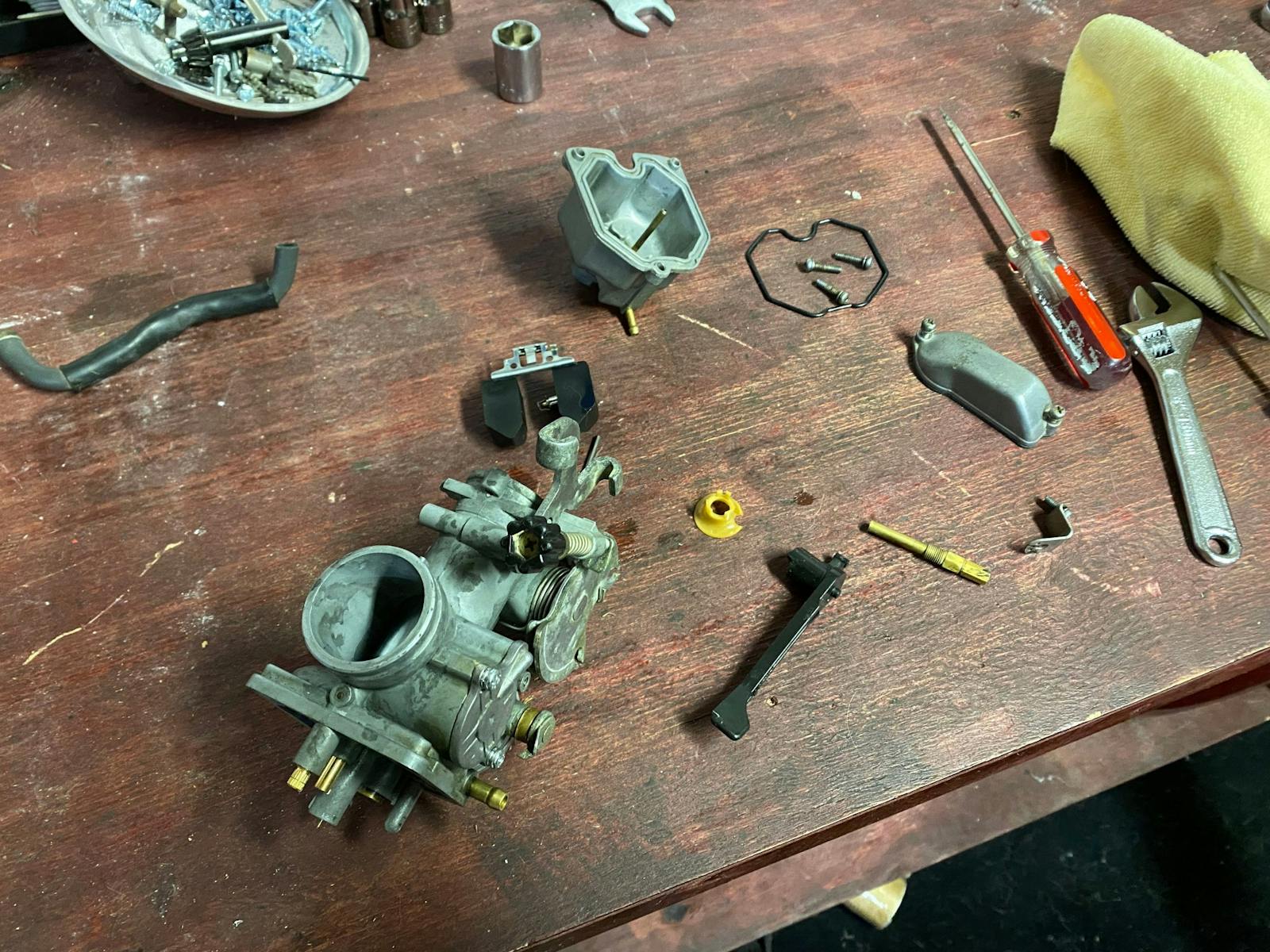The best tips for winter car storage and care
The trees are almost bare and the evening arrives sooner each day. We all know what that means: It’s time to tuck away our classics into storage. We may have published this article in 2018, but it’s still our go-to checklist, and we hope it serves you well. —Ed.
Just when you thought you’d heard every suggestion and clever tip for properly storing your classic automobile, along comes another recommendation—or two, or three.
As you can imagine, we’ve shared plenty of ideas and advice about winter storage over the years. Some of those annual recommendations are repeated here. And some have been amended—for example, the fragrance of dryer sheets is way more pleasing to our noses than the stench of moth balls, and the fresh smell actually does a superior job of repelling mice.
Finally, each year we receive tried-and-true suggestions from our readers that we just have to share. In 2017, our resident do-it-yourself mechanic Rob Siegel received plenty of kudos for his winter prep story, which included some valuable myth busting, and his story also drew a number of storage ideas from readers.
Armed with information old and new, here are our top tips for storing your classic vehicle. Did we miss something important? Let us know in the comments section below. We’re all in this together.
Wash and wax

It may seem fruitless to wash the car when it is about to be put away for months, but it is an easy step that shouldn’t be overlooked. Water stains or bird droppings left on the car can permanently damage the paint. Make sure to clean the wheels and undersides of the fenders to get rid of mud, grease and tar. For added protection, give the car a coat of wax and treat any interior leather with a good conditioner.
Car cover

Even though your classic is stored in the garage in semi-stable temperatures and protected from the elements, a car cover will keep any spills or dust off of the paint. It can also protect from scratches while moving objects around the parked car.
Oil change

If you will be storing the vehicle for longer than 30 days, consider getting the oil changed. Used engine oil has contaminants that could damage the engine or lead to sludge buildup. (And if your transmission fluid is due for a change, do it now too. When spring rolls around, you’ll be happy you did.)
Fuel tank

Before any extended storage period, remember to fill the gas tank to prevent moisture from accumulating inside the fuel tank and to keep the seals from drying out. You should also pour in fuel stabilizer to prevent buildup and protect the engine from gum, varnish, and rust. This is especially critical in modern gasoline blended with ethanol, which gums up more easily. The fuel stabilizer will prevent the gas from deteriorating for up to 12 months.
Radiator
This is another area where fresh fluids will help prevent contaminants from slowly wearing down engine parts. If it’s time to flush the radiator fluid, doing it before winter storage is a good idea. Whether or not you put in new antifreeze, check your freezing point with a hydrometer or test strips to make sure you’re good for the lowest of winter temperatures.
Battery

An unattended battery will slowly lose its charge and eventually go bad, resulting in having to purchase a new battery in the spring. The easiest, low-tech solution is to disconnect the battery cables—the negative (ground) first, then the positive. You’ll likely lose any stereo presets, time, and other settings. If you want to keep those settings and ensure that your battery starts the moment you return, purchase a trickle charger. This device hooks up to your car battery on one end, then plugs into a wall outlet on the other and delivers just enough electrical power to keep the battery topped up. Warning: Do not use a trickle charger if you’re storing your car off property. In rare cases they’ve been known to spark a fire.
Parking brake
For general driving use it is a good idea to use the parking brake, but don’t do it when you leave a car in storage long term; if the brake pads make contact with the rotors for an extended period of time, they could fuse together. Instead of risking your emergency brake, purchase a tire chock or two to prevent the car from moving.
Tire care

If a vehicle is left stationary for too long, the tires could develop flat spots from the weight of the vehicle pressing down on the tires’ treads. This occurs at a faster rate in colder temperatures, especially with high-performance or low-profile tires, and in severe cases a flat spot becomes a permanent part of the tire, causing a need for replacement. If your car will be in storage for more than 30 days, consider taking off the wheels and placing the car on jack stands at all four corners. With that said, some argue that this procedure isn’t good for the suspension, and there’s always this consideration: If there’s a fire, you have no way to save your car.
If you don’t want to go through the hassle of jack stands, overinflate your tires slightly (2–5 pounds) to account for any air loss while it hibernates, and make sure the tires are on plywood, not in direct contact with the floor.
Repel rodents

A solid garage will keep your car dry and relatively warm, conditions that can also attract unwanted rodents during the cold winter months. There are plenty of places in your car for critters to hide and even more things for them to destroy. Prevent them from entering your car by covering any gaps where a mouse could enter, such as the exhaust pipe or an air intake; steel wool works well for this. Next, spread scented dryer sheets or Irish Spring soap shavings inside the car and moth balls around the perimeter of the vehicle. For a more proactive approach, also lay down a few mouse traps (although you’ll need to check regularly for casualties).
Maintain insurance
In order to save money, you might be tempted to cancel your auto insurance when your vehicle is in storage. Bad idea. If you remove coverage completely, you’ll be on your own if there’s a fire, the weight of snow collapses the roof, or your car is stolen. If you have classic car insurance, the policy covers a full year and takes winter storage into account in your annual premium.
Your comments/suggestions
- “A good friend of mine and ex-Ferrari race mechanic (Le Mans three times) recommends adding half a cup of automatic transmission fluid to the fuel tank before topping up, and then running the engine for 10 minutes. This applies ONLY to carburetor cars. The oil coats the fuel tank, lines and carb bowls and helps avoid corrosion. It will easily burn off when you restart the car.”
- A warning regarding car covers: “The only time I covered was years ago when stored in the shop side of my machine shed. No heat that year and the condensation from the concrete caused rust on my bumpers where the cover was tight. The next year I had it in the dirt floor shed and the mice used the cover ties as rope ladders to get in.”
- “I use the right amount of Camguard in the oil to protect the engine from rust. It’s good stuff.”
- “Your car’s biggest villain is rust, that’s why I clean the car inside and out, and wax it prior to putting it in storage. For extra protection, I generously wax the bumpers and other chrome surfaces, but I do not buff out the wax. Mildew can form on the interior; to prevent this I treat the vinyl, plastic, and rubber surfaces with a product such as Armor All.
- “Ideally, your car should be stored in a clean, dry garage. I prepare the floor of the storage area by laying down a layer of plastic drop cloth, followed by cardboard. The plastic drop cloth and cardboard act as a barrier to keep the moisture that is in the ground from seeping through the cement floor and attacking the underside of my car.”
- “Fog out the engine. I do this once the car is parked where it is to be stored for the winter, and while it is still warm from its trip. Remove the air cleaner and spray engine fogging oil into the carburetor with the engine running at a high idle. Once I see smoke coming out of the exhaust, I shut off the engine and replace the air cleaner. Fogging out the engine coats many of the internal engine surfaces, as well as the inside of the exhaust with a coating of oil designed to prevent rust formation.”
Relax, rest, and be patient

For those of us who live in cold weather states, there’s actually a great sense of relief when you finally complete your winter prep and all of your summer toys are safely put to bed before the snow flies. Relax; you’ve properly protected your classic. It won’t be long before the snow is waist-high and you’re longing for summer—and that long wait may be the most difficult part of the entire storage process. Practice patience and find something auto-related to capture your attention and bide your time. You’ll be cruising again before you know it. (Keep telling yourself that, anyway.)
***
Check out the Hagerty Media homepage so you don’t miss a single story, or better yet, bookmark it. To get our best stories delivered right to your inbox, subscribe to our newsletters.



I spray the rotors with silicon spray to prevent any corrosion when in storage…it burns off in the first few seconds of light braking (as opposed to oil that should never be used) and also helps prevent the calipers from seizing on the rotors. I leave the battery connected (with a battery maintainer ) because otherwise you could risk losing proprietary software with no a battery especially with German made cars. I would not jack up the car whereby your shocks are extended…did that one year and the inner shock columns got slight rust which then cut the seals on the shocks when the car was lowered ending up with shocks leaking oil and no longer functional.
I have and am using most of these methods. I have mine stored in a heated garage and pay an exterminating company to go through the garage and they check on their work and guarantee it. If I see any issues, they will come out every 3 months to inspect their work. It is definitely worth the cost as I have not had any rodent issue since.
I also use a rodent repellent called “Fresh Cab”. It does a great job at keeping the little buggers out of any vehicle whether they are stored inside or outside, (like my plow truck). It is made with Balsam Fir Oil and comes in scent pouches that smells good to us but not mice. https://www.tractorsupply.com
I stored my car in a new location last winter. I followed the internet wisdom of steel wool, dryer sheets and Irish Spring soap. This in addition to all the other steps recommended above.
When I went to recover my car in the spring, I took off the cover and collected the steel wool, the Bounce sheets and the Irish Spring and disconnected the trickle charger before firing the engine. Imagine my surprise when the Irish spring box sitting under the engine turned out to be only 2/3 full of soap and 10% full of mouse droppings. Seems like the little critter curled up inside the box and ate Irish Spring for lunch.
No Irish Spring for this years storage.
I too abide by most of all the mentioned tips. I too have a heated garage (60’ F) but have two daily use vehicles that use the other half of the garage that bring in ice and snow which subsequently melts off. I use a dehumidifier to counter act the moisture in the air that comes from the melted ice and snow. The garage has floor heat and a drain so the floor remains dry almost all the time.
Bad advice long term storage re car covers and rodent protection. There’s an easy, albeit not cheap solution but if u have thousands of dollars invested…….? Ethanol is nasty stuff. The only solution is completely drain system which is tough. Convert to stainless steel system the only good solution, again, not cheap but…..
The others, well ya….
Never use ethanol, it’s inferior fuel, attracts moisture and will rust a full tank. Jack stands are good for springs but bad for shocks and hideous for unibody.
All very good suggestions. If I may add a couple of ideas. Yes, moisture can be a big problem. To protect the interior, I use a moisture absorber, such as Damprid. I don’t like the idea of suspending the vehicle on jacks for a long period. This can’t be good for the suspension. I do over-inflate the tires to 40 lbs. In the past, I also parked the vehicle on soft mats. I never had a problem with the tires doing this. I read that someone suggested the tire cradles. This too sounds like a good idea, which I will look into.
Use a count-down app like Days Matter Air (free). Choose your favourite car photo and set a count-down period until the date your baby comes out of hibernation. Waiting doesn’t seem as hard when your iPhone helps you count down to the ‘wake up’ date. 🎉🎉